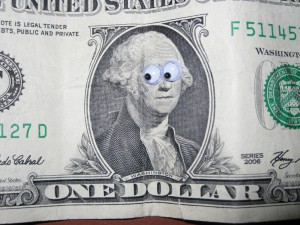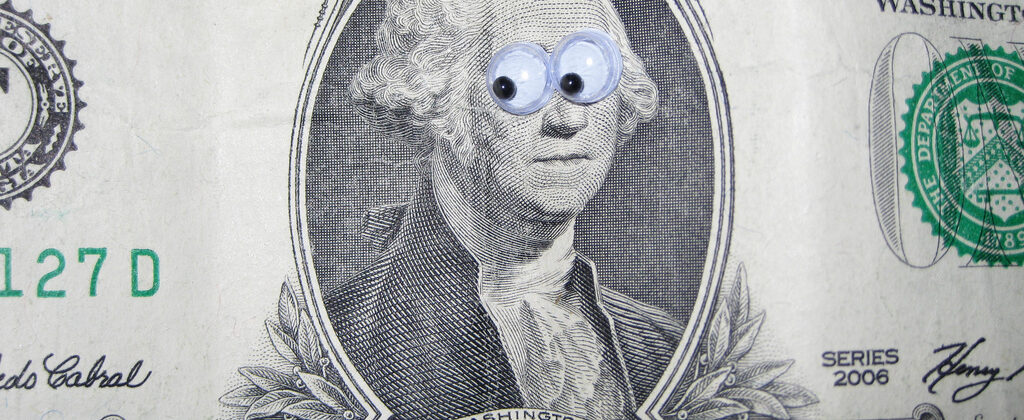
This is Part 13 of a free online tutorial about writing a sales page.
We’re nearing the end of this rollercoaster ride of a tutorial, just a few more lessons and I’ll be showing you how to bring everything together in an example sales page outline.
This time our focus is on: subheadings.
When it comes to writing a sales page, the headline usually gets the most attention. It is, after all, the most important part of your sales page. If you don’t grab people with your headline, it doesn’t matter how great the rest of the copy is, people won’t read it.
Subheadings have a similar function. Imagine running along and kicking a ball. Just before the ball comes to rest, you give it another little kick to keep the momentum going.
That’s pretty much what your subheadings do, they give your reader a little ‘kick’ into the next section of the copy.
Simply writing something in a larger font however, doesn’t automatically make a catchy subheading.
So in this lesson, I’ve scoured some well-performing sales pages to inspire the list below: common ways copywriters use subheadings to attract, engage and persuade.
1. Make a BIG promise
Don’t be shy when it comes to selling your product. As long as you can follow through with your claim, you should be confident in telling your reader what they will experience or be able to do as a result of using your product or service.
The subheading for Leil Lowndes’ information product Conversation Confidence starts with:
“I promise you the ability to walk into a room full of strangers – and talk to anyone with total confidence, authority and flair.”
For someone suffering with shyness or social anxiety, that is a big, relevant and attractive promise. Immediately it identifies the target market and offers them something they would love to have.
Remember though when making a big promise in your sales page it has to be something that:
- Your reader actually wants
- Believable
- Supported by the rest of your sales copy
2. Ask a loaded question
The engaging nature of a question makes them perfect for subheading fodder. A loaded question is also more likely to trigger an emotional reaction from your audience. Loaded questions in sales pages are designed to be rhetorical. You want your reader to think of the answer that compels her to read the next part of your copy.
Copywriting legend Dan Kennedy is a master of the loaded question, with this example for his copywriting academy sales page:
“Are you ready to leap up to the big leagues? If not now, when?”
The question presupposes that the reader is not already in the big leagues (a smart way to identify the target market). It also assumes that the reader has an ambition and desire for more with their copywriting career.
Other similar style questions include asking the reader if he:
- Is sick and tired of suffering from a problem
- Is deserving of more results / benefits in his life
- Would want to know that there is a solution to a problem he has
3. Bring them into the ‘elite’ crowd
A popular style of subheading in sales pages follows the pattern of:
A lot of people like you suffer from this problem / never achieve their goals, but YOU don’t have to be one of them… and here’s how
Let’s take another example from Dan Kennedy:
Why Most Copywriters NEVER Crack Through To Ideal, Permanent Clientele And Top Income – Three “Uncomfortable Truths”
By using the term “Most Copywriters” Kennedy is subliminally saying to the reader
“But not you of course, you’re one of the ‘elite’ because you’re reading this sales page, and will learn the things most copywriters don’t know.”
People love to feel special, important and part of a select group which is why this style of subheading works so well.
In fact, it’s doing a number of important jobs as a subheading:
- It lays the foundation for explaining why the problem exists
- It appeals to the reader’s fear (that they will never achieve the dream of better clients and a higher income)
- It suggests the writer can show the reader how to avoid this, and become one of the few to succeed
- It arouses curiosity by threatening to reveal some ‘uncomfortable truths’
How might you use this style of subheading in your sales page?
Why not start by copying the basic structure of the subheading above:
Why Most [target market] NEVER [achieve benefits / results you offer] – Here’s The Uncomfortable Truth:
Play around with this style and see how you can pull your reader into the elite crowd.
4. Explain WHY the problem exists
Your customer’s problem is a key subject in your sales page so it’s no surprise that it makes sense to draw attention to it in a subheading.
The following subheading was taken from a sale page that was mailed for 3 years and made between half a million and 1 million dollars. It encourages customers to place their money with Swiss Money Strategies and uses fear extensively throughout the letter:
NINE SERIOUS, IMMINENT THREATS TO YOUR HARD-EARNED MONEY!!!
Full on? Yep. Effective in this case? Absolutely.
It might not be the right tone of voice for your customer, but the sales page then cleverly highlights 9 different reasons why the reader’s “hard-earned” money is in danger. By providing proof to back up the claim, the sales page builds credibility and trust.
This style of subheading is not for everyone, but everyone can use a subheading to highlight and explain the problem being solved by the product or service.
Some lower-key approaches might include:
- Why [problem] exists, (but can be solved today)
- How [problem] sneaks up on you without you realising
- The real reason you still suffer from [problem] might surprise you…
Practice with your own sales page, where can you use a subheading about the problem, and then how can you explain why that problem exists?
5. Bust some myths
Busting myths in your sales page gives it a ‘newsworthy’ quality, because in essence you’re saying:
“This is what you think is true about this subject, but I’m here to tell you that’s not true.”
By suggesting to your reader that they have a knowledge gap regarding a subject they’re interested in is a powerful curiosity trigger, and perfect for a subheading.
For example:
10 Reasons Organic Food is Actually Harmful to Your Children
3 Common Beliefs About Website Design That is Killing Your Business
The Facebook Ad Myths Not Even The “Experts” Know About
6. Why the solution is possible
The purpose of your sales page is to offer a solution to a problem with your product or service. But, just as with point 4, if you can also provide logic that proves you can solve the problem (rather than just telling people you can) your powers of persuasion will be more effective.
Let’s go back to Dan Kennedy. Here’s a subheading from a different sales page of his that promotes a course for copywriters about how to get into info-marketing.
One subheading stands out and commands attention:
Who Are These Clients & Why Is Their Need For Freelance Copywriters and Writers So Great?
Notice he’s not saying: “I will show you how to get more clients.”
The subheading is more editorial than promotional. It’s not pushing the sales, it’s laying the foundation for the sale.
How might you use something similar in your sales page?
- Why you can solve [problem] today but couldn’t [X] years ago
- The science behind solving [problem]
- What are the 3 things you need to know to improve your chances of achieving [results / benefits]?
7. Your unique offer
If your customer has been promised similar solutions in the past so you have to show why your offer is unique. What better way to do that, than use a subheading to draw attention to this?
Here is an example from a famous sales page that generated $1 billion in revenues selling The Wall Street Journal:
A publication Unlike Any Other
And here is another subheading from a sales page that appeared in Fortune to advertise a farm’s pears:
America’s Rarest Fruit – Shall We Ship It Abroad?
Go back to your USP, are you revealing that in one of the subheadings of your sales page?
8. What’s in the box?
At some point in your sales page, your customer will want to know what they’re going to receive in exchange for their money.
Being able to visualise the experience of working with you or using your product increases confidence and trust, so make sure they can find this section easily with subheadings such as:
But what, exactly, can you expect to find in the pages of The Economist?
What will you learn during this 3 week course?
What exactly does the ebook cover?
How will you announce the contents of your product or service?
9. The results or benefits
You didn’t think you were going to get away without hearing about the benefits did you?
Your reader is, of course, very interested in how your offer is going to change their life. So don’t hold back!
The following subheading is from an example of a benefits-oriented sales page written by expert copywriter Eugene Schwartz. The headline was the infamous:
Burn Disease Out of Your Body
lying flat on your back, using nothing more than the palm of your hand!
And the subheading drawing attention to the results was:
And here are more results Dr. Chang promises you — perhaps starting with your very first day…
Naturally, we know that the following section is where we are going to hear meaty promises about what the offer will do for us. It’s one of the critical sections that will convince your customer to buy, so make sure you signpost it with an eye-catching headline!
What about you? Are there other subheading styles you’ve used in the past with success? Share it with the group in the comments below. Want to see the first lesson in this free online sales page tutorial? Click here.

Great list, Amy. And wonderful samples, too.
I could not help but wonder why some clients don’t understand how hard it is to think of a compelling subheading.
Well, I guess now I’ll be able to think faster than I used to.
Thanks for being my “silent” mentor all the way.